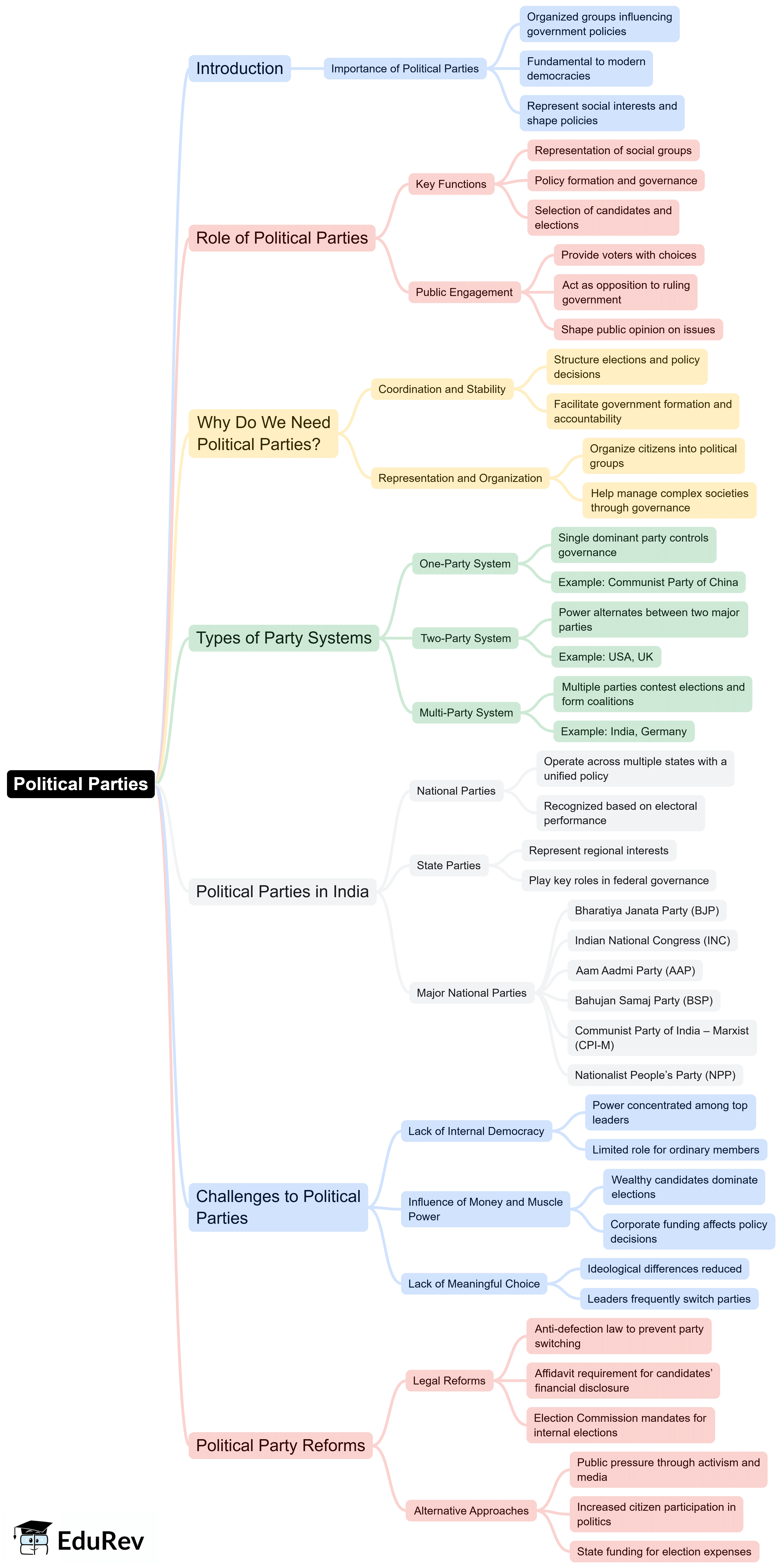Class 10 Exam > Class 10 Notes > Social Studies (SST) Class 10 > Mind Map: Political Parties
Mind Map: Political Parties | Social Studies (SST) Class 10 PDF Download

The document Mind Map: Political Parties | Social Studies (SST) Class 10 is a part of the Class 10 Course Social Studies (SST) Class 10.
All you need of Class 10 at this link: Class 10
|
66 videos|614 docs|79 tests
|
FAQs on Mind Map: Political Parties - Social Studies (SST) Class 10
| 1. What are the main functions of political parties? |  |
Ans. Political parties serve several key functions in a democratic system, including representing diverse interests, organizing elections, formulating policy agendas, providing a platform for political participation, and facilitating governance. They play a critical role in mobilizing voters and fostering political debate.
| 2. How do political parties influence public policy? |  |
Ans. Political parties influence public policy by shaping the legislative agenda, promoting specific policies aligned with their ideologies, and mobilizing support among constituents. When a party gains majority control in a legislature, it can implement its policy priorities, impacting laws and regulations.
| 3. What are the differences between major and minor political parties? |  |
Ans. Major political parties typically have significant resources, widespread recognition, and a substantial voter base, allowing them to influence national politics. Minor parties, on the other hand, often represent specific interests or ideologies, face challenges in gaining visibility, and may struggle to win elections but can impact major parties' platforms.
| 4. Why are political parties important in a democracy? |  |
Ans. Political parties are essential in a democracy because they provide a structured way for citizens to express their political preferences, facilitate organized competition for political power, and enhance accountability through opposition. They also educate voters about issues and candidates.
| 5. How do political parties evolve over time? |  |
Ans. Political parties evolve due to changing social dynamics, shifts in public opinion, and responses to emerging issues. They may adapt their platforms, form coalitions, or even dissolve and re-emerge as new parties to remain relevant and address the needs of their constituents.
Related Searches
















